By the mid-90’s, Western Digital had gained a few years of experience building hard disk drives, after their acquisition of Tandon in late-1987. The Caviar 1170 was an example of these sleek new designs, among a number of other larger Caviar models.
With a 3 year warranty, alongside incredibly respectable benchmark results, the Caviar series would prove to be impressive competition for other major 3.5″ competing brands such as Seagate and Conner Peripherals during the early-mid 90’s.
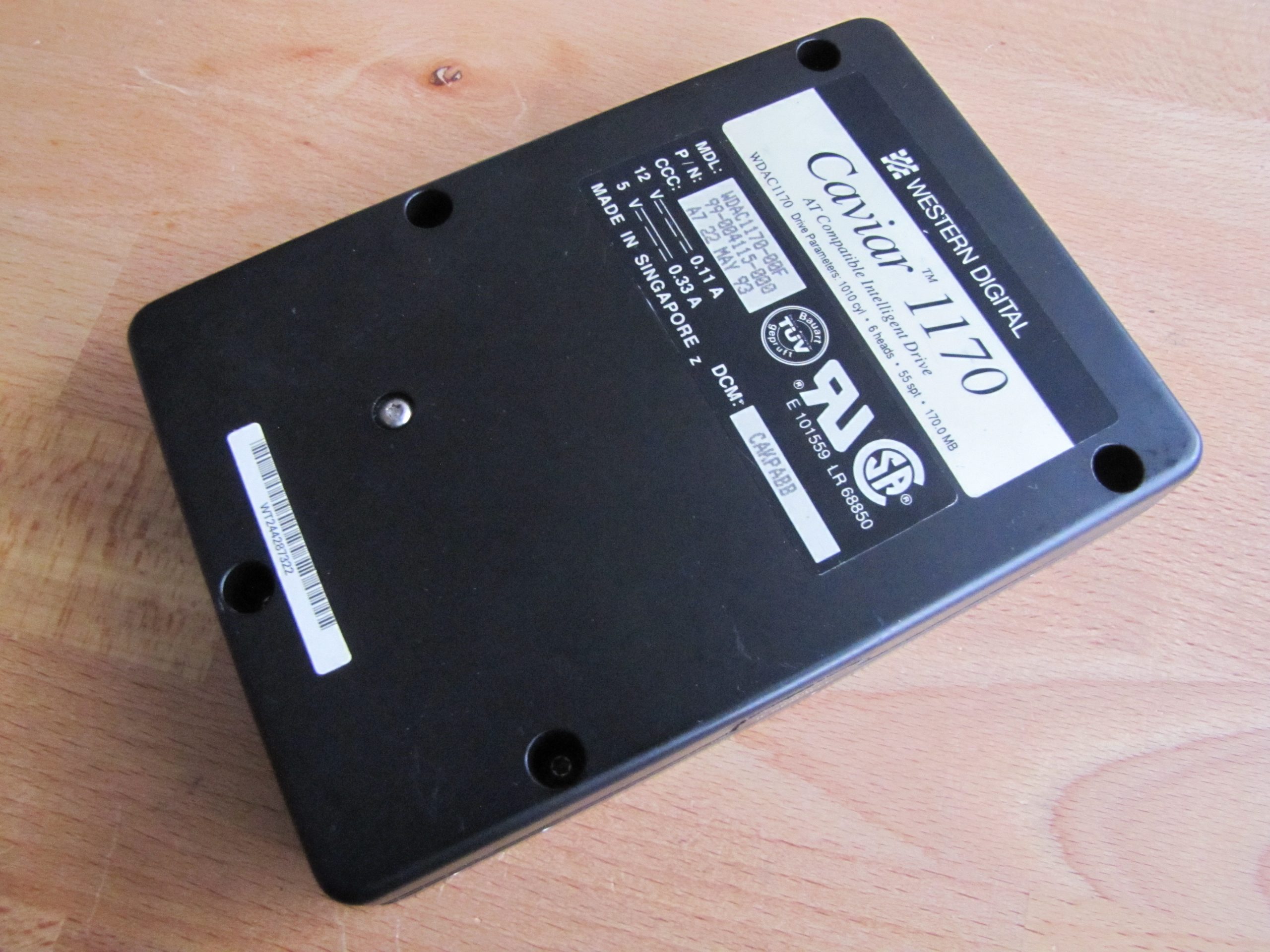
Drive Attributes ---------------------------------------- Western Digital Caviar 1170 WDAC1170-00F ---------------------------------------- Capacity 170MB Mfc Date 1993-05-22 Format 3.5" Interface PATA Platters 1 Heads 2 RPM 3322 CHS 1010/6/55 ----------------------------------------
Being a low-capacity Caviar, the 1170’s only hold a single platter, cleverly designated by the first digit in the model number, followed by the capacity amount (in MB). This particular drive is an early example of the 1170 model line, which would have somewhat of a label facelift, alongside all other Caviar models, in mid-1993.

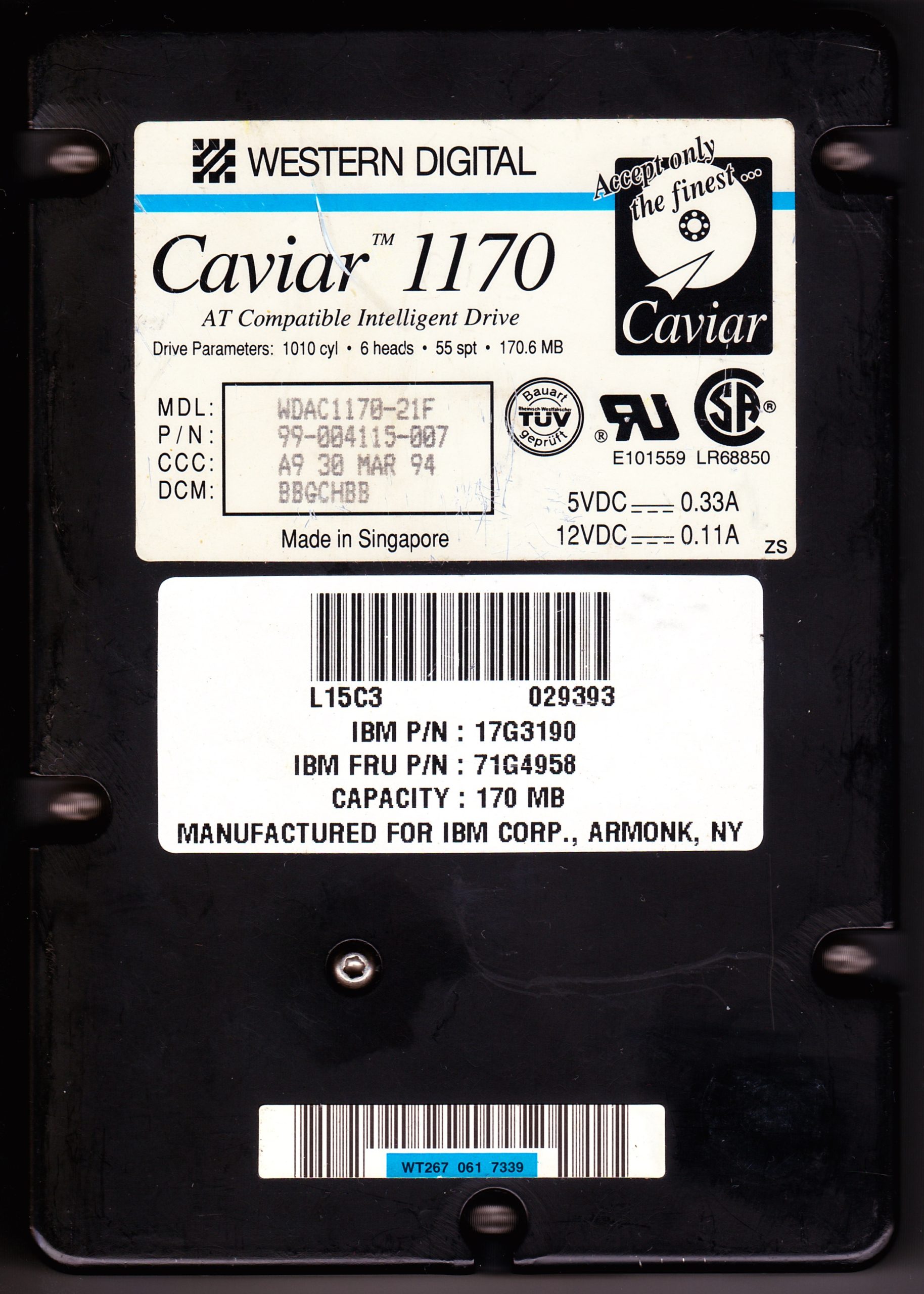

The iconic “Accept only the finest…” catch-phrase Western Digital coined at the time only appeared on drives with the newly added coloured stripe, which differed depending on drive capacity. Aside from the label change, there aren’t any mechanical nor logical differences between the two, even with being produced almost a year later.
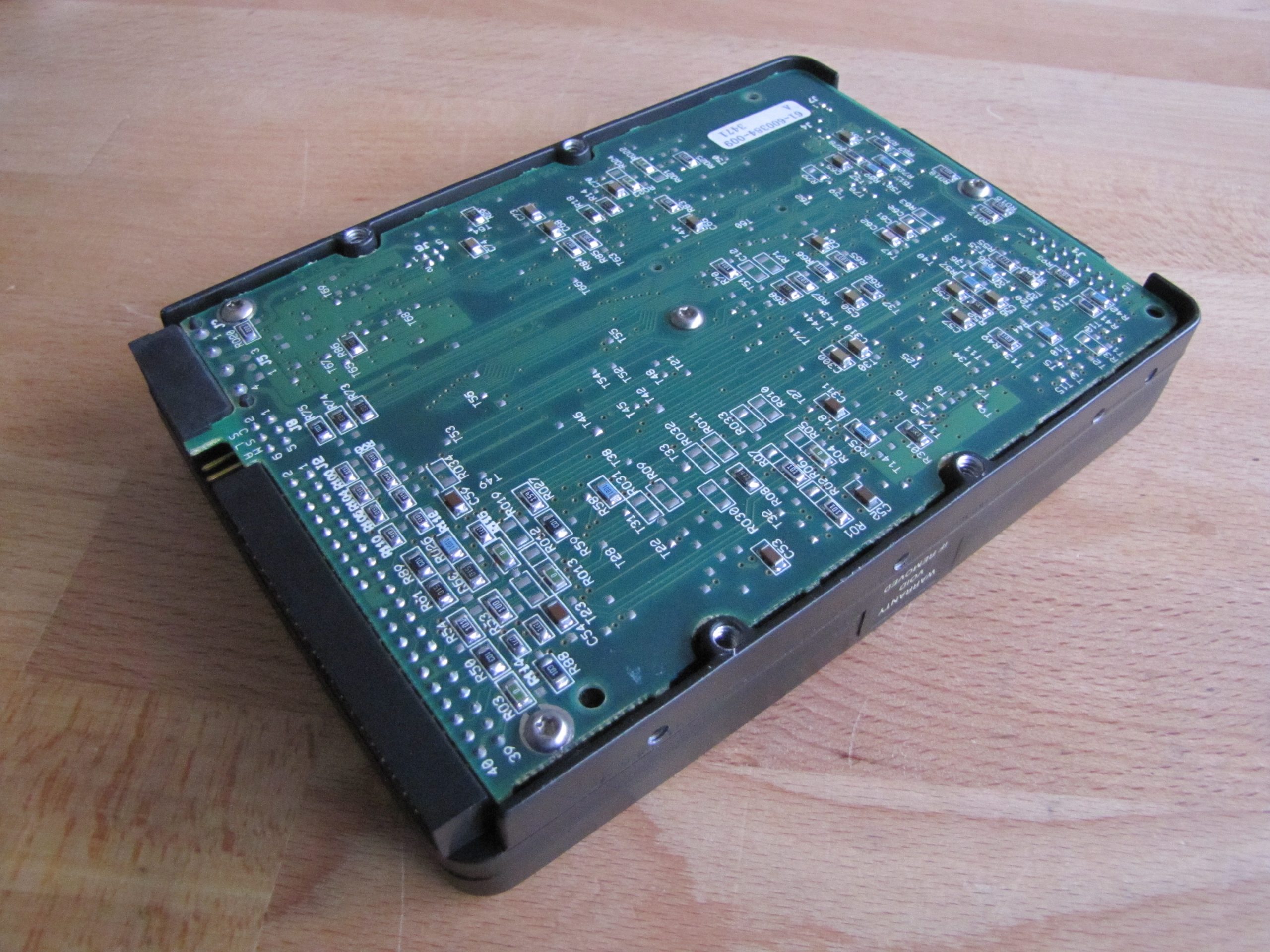
Moving on with the older of the two, Western Digital were certainly an early adopter of having logic IC’s face inwards, preventing physical damage and mitigating against ESD damage. The PCB is fastened to the base-housing with only 4 screws, alongside the J1 head-stack interface header. As is expected, standard Molex and IDE connectors are present on this drive.

Once removing the 4 aforementioned screws, the board comes off relatively easily. However, Western Digital used a fairly low-guage wire connection to the PCB from the spindle motor (as is expected, using three-phase power), so it’s worth being careful when disassembling these.
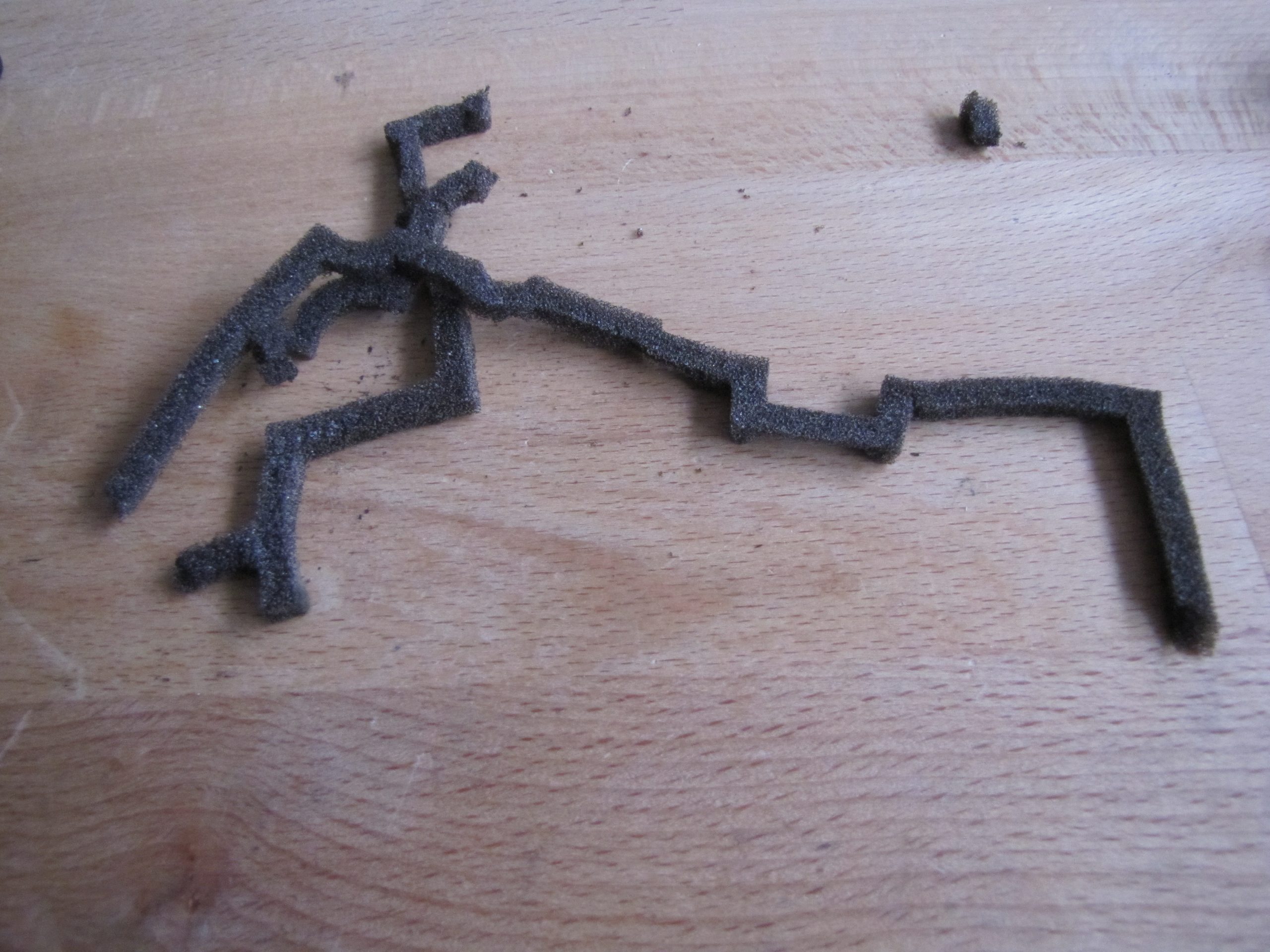
Being almost 30 year old foam, this stuff didn’t survive the operation. Unlike some drive models, replacing the foam on these drives isn’t essential, so this drive will remain without it going into the future.
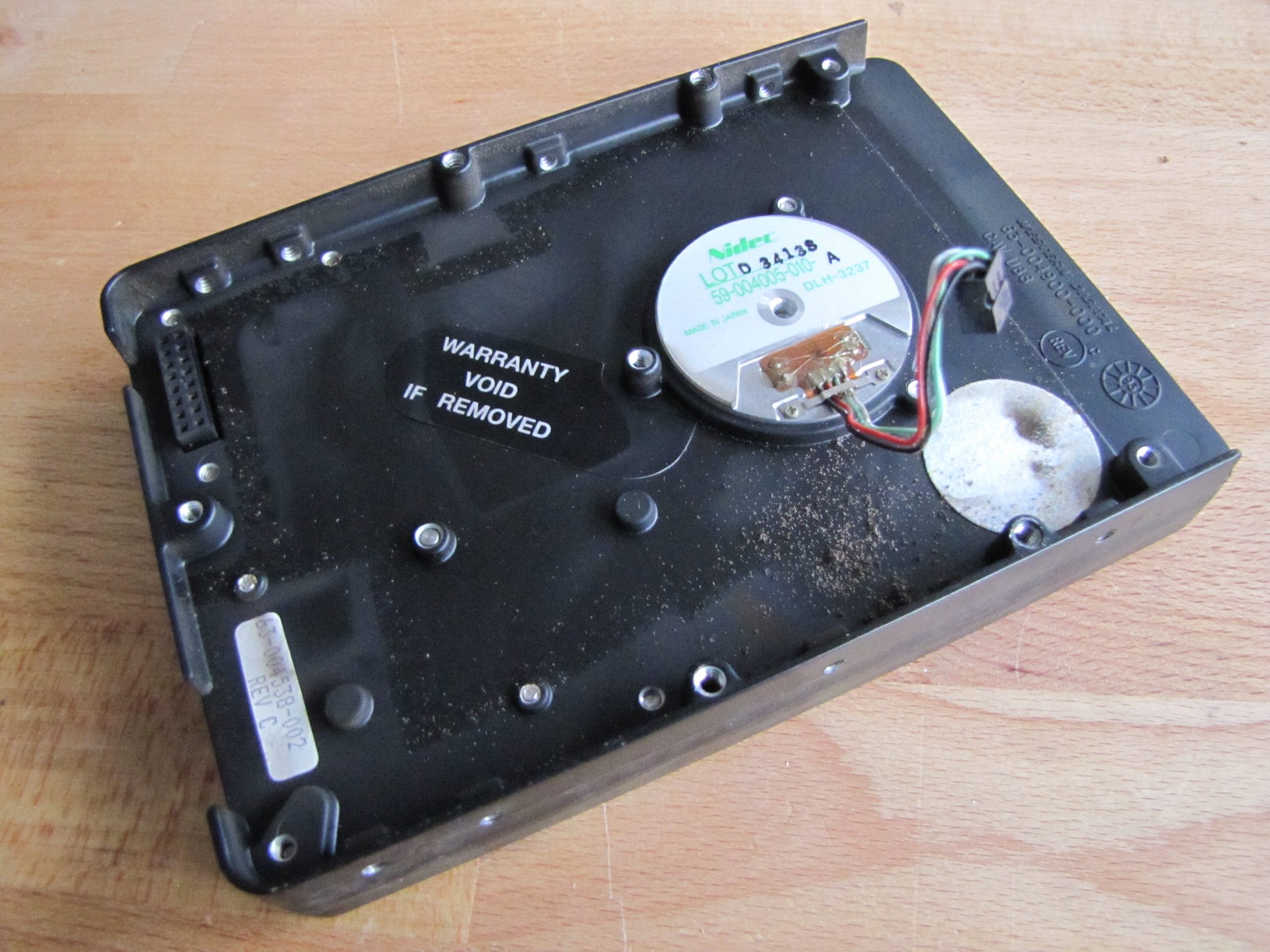
The foam fallout has clearly been an ongoing problem for this drive. Nonetheless, we’re greeted with a Nidec spindle-motor, as was a tradition for Western Digital with these black-cased Caviar’s (although, not always). The J1 header socket is clearly visible to the south-side of the drive.
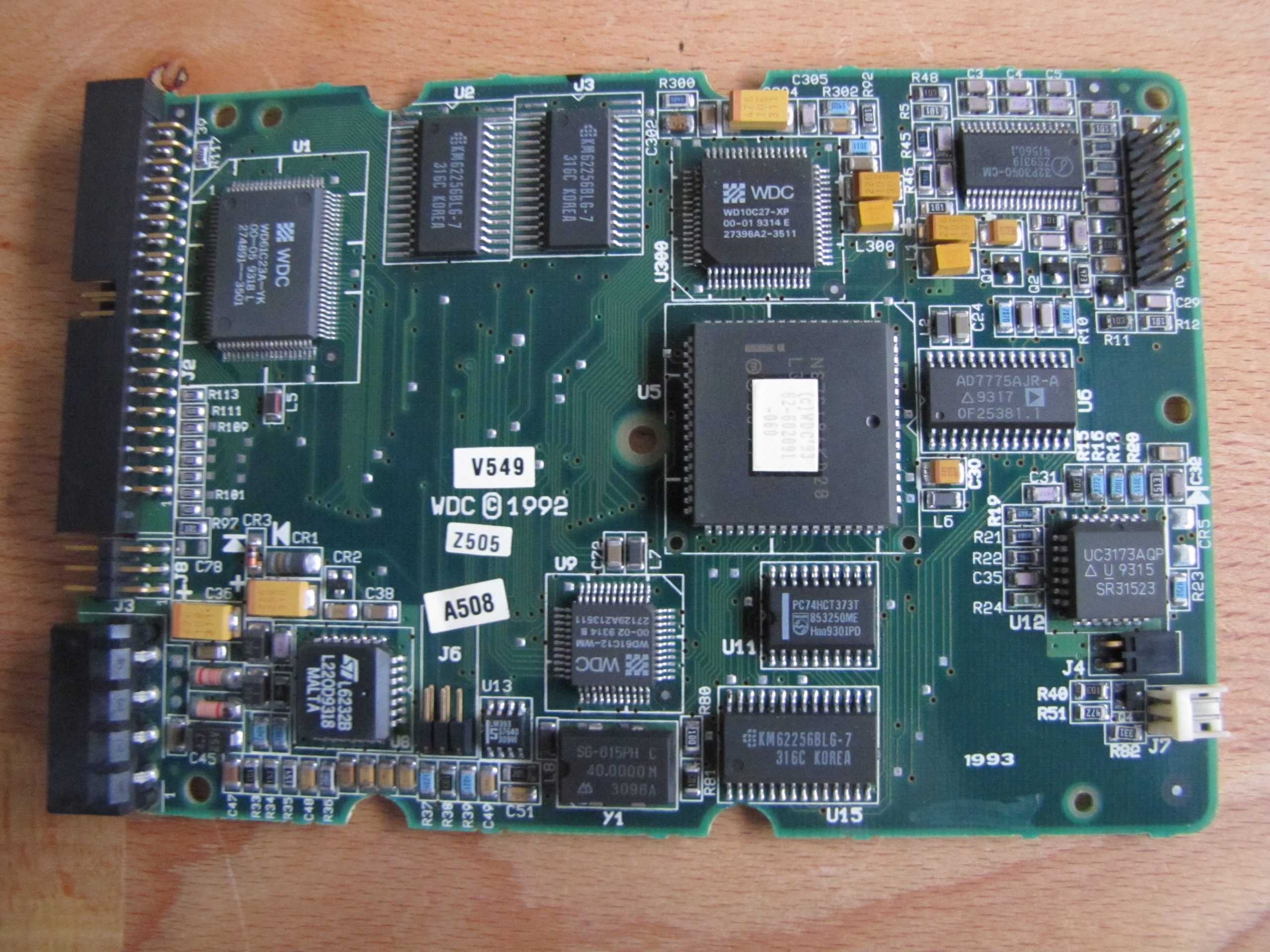
While these drives were released in 1993, Western Digital clearly did the majority of the logic design in 1992, at least when concerning the PCB layout. The jumper header is labelled as J3 (or J8, depending on the silkscreen you prefer), which like most Caviar’s is excellently laid out with the following options available:
J8 Jumper Settings
=======================================================
+5-3-1+ Single Drive +5-3-1+ Master Drive
|o o o| Configuration |X o o| Configuration
|o o o| |X o o| (Dual Drives)
+6-4-2+ +6-4-2+
+5-3-1+ Slave Drive +5-3-1+ Cable Select
|o X o| Configuration |o o X| Configuration
|o X o| (Dual Drives) |o o X| (Dual Drives)
+6-4-2+ +6-4-2+
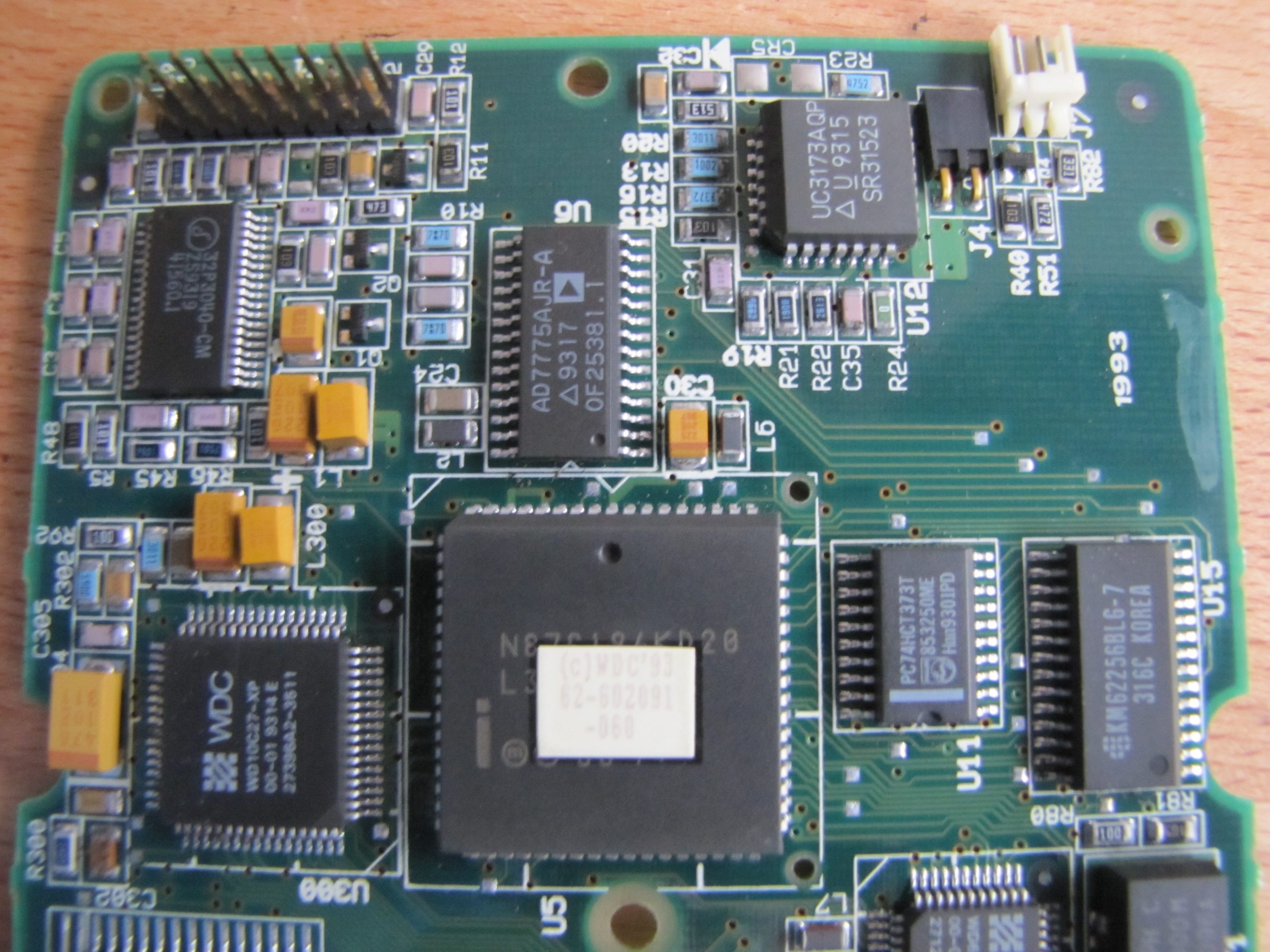
The usual J7 external LED header is presen. Fortunately, these only use tantalum-based capacitors, which fortunately increases their long-term lifespan.
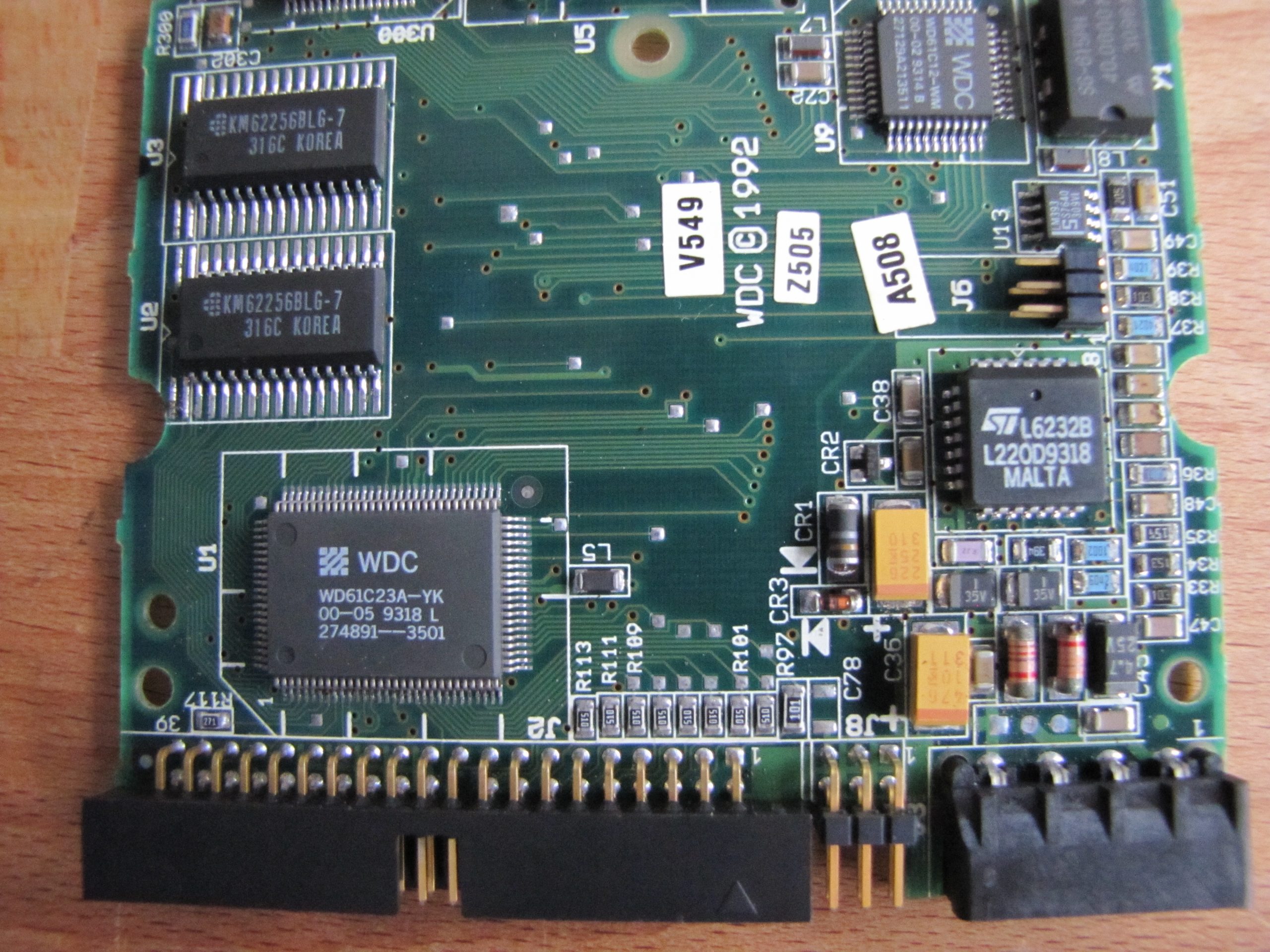
Western Digital used their own controller IC (clearly seen by the connecting traces to the IDE header/J2), alongside Hyundai chips for cache/buffer RAM. Aside from that, there’s not much more to talk about, Western Digtial used a fairly consistent logic design and board layout with all of their models in the Caviar series.
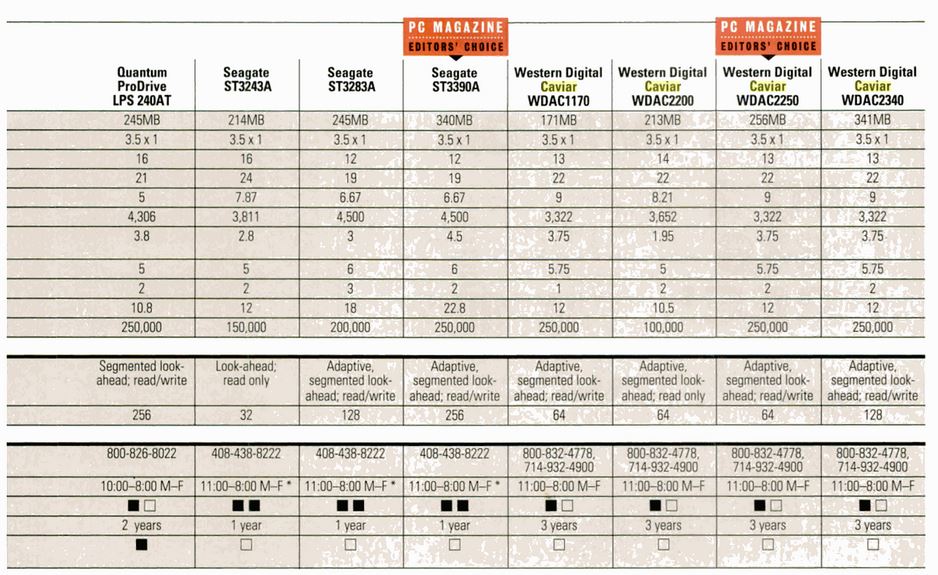
Western Digtial most certainly had the industry standard for warranty limits during the early 90’s. Seagate, ironically similarly to today, seem to lack on that front somewhat. These Caviar’s had quite a large market in the OEM sector (an example being the IBM-labelled drive above, with the newer label design), alongside being somewhat of a status-symbol for enthusiasts all around.
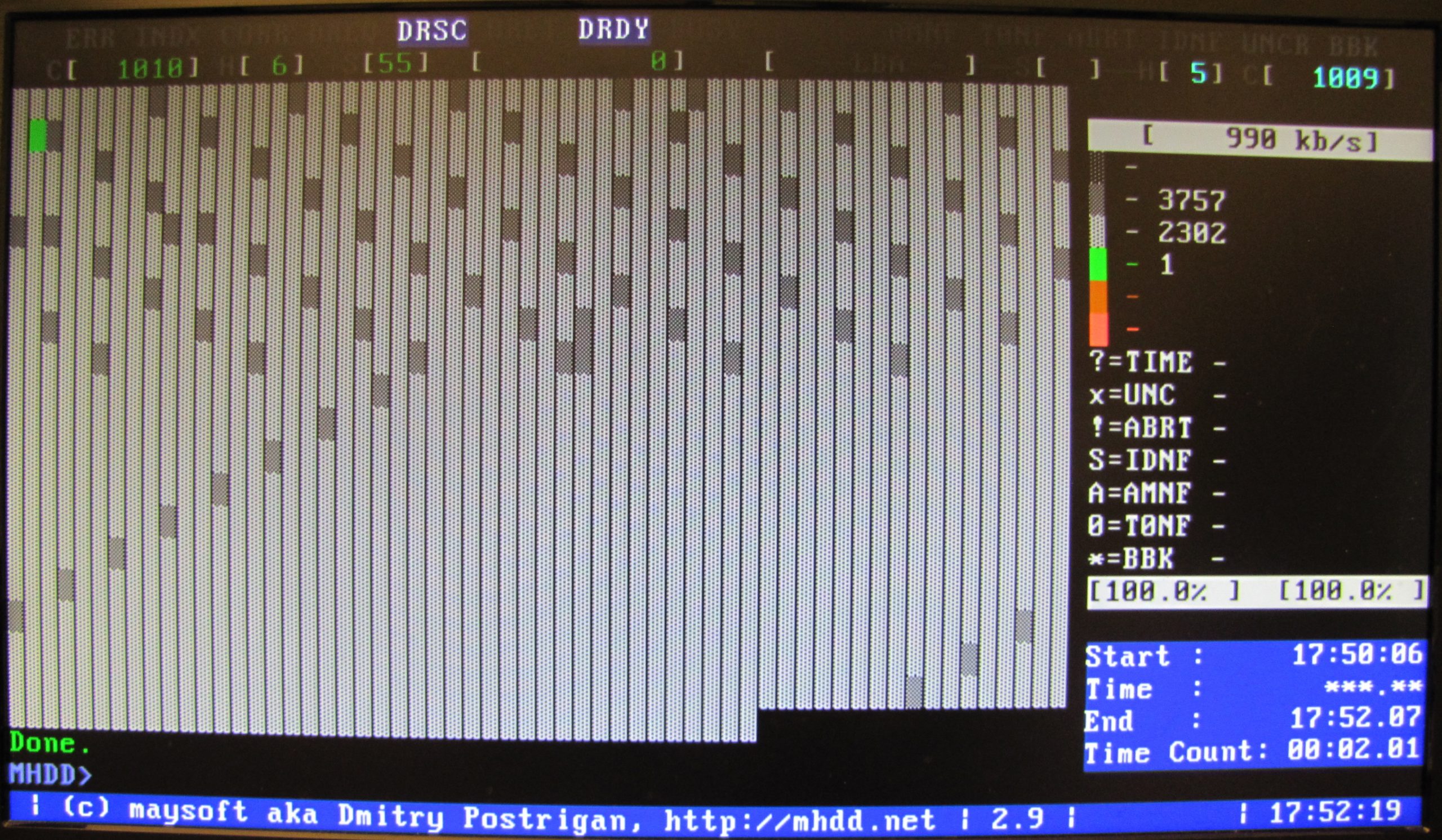
A classic Caviar with no bad or slow sectors is always a welcome sight. Personally, these old Caviar’s have been somewhat of a mixed bag. The newer Caviar 1170 as shown above, is littered with bad sectors past 85% capacity. This is seemingly rather common, as the vast majority of these I’ve personally come across have similar results. Nonetheless, they continue to work reasonably well, even if they require formatting under their maximum capacity in order to work as intended.
It’s anyone’s guess if these Caviar’s will remain in operational condition, but for now they still work to a decent degree in the early 21st century.
If you missed the video I made on this drive, you can find it here: